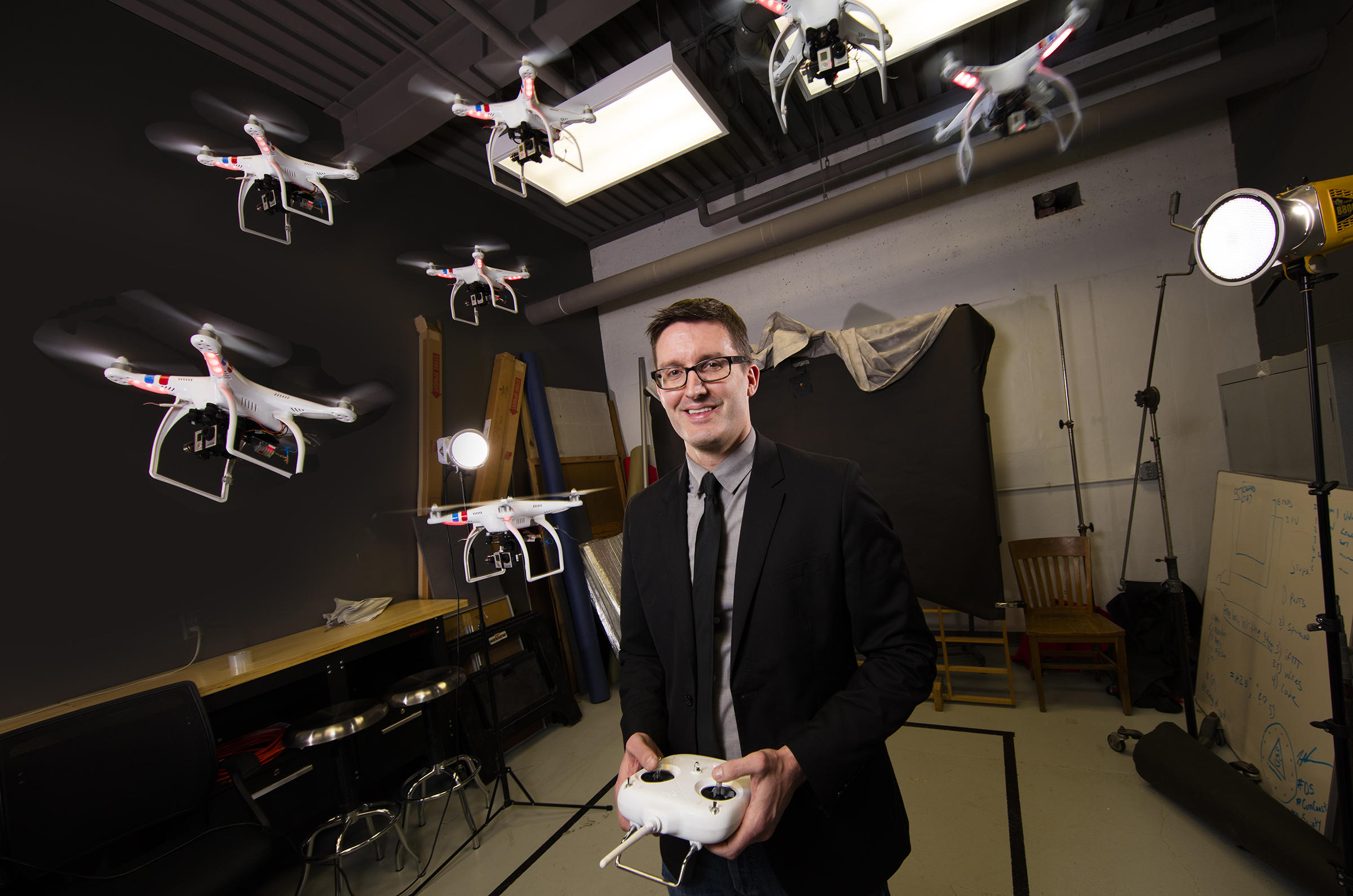
To help newsrooms get started using drones for journalism, the University of Nebraska-Lincoln’s Drone Journalism Lab is releasing an operations manual that covers everything from pre-flight checklists to ethical considerations.
A first of its kind, the manual is free, Creative Commons licensed and provided as an open source document online. The Drone Journalism Lab created it with support from the John S. and James L. Knight Foundation. It was produced by Matt Waite, professor of practice in the College of Journalism and Mass Communications, and is available here.
“As journalists look to become more relevant and responsive to community needs, this manual is an important step toward experimenting with new ways of gathering and presenting news and information,” said Shazna Nessa, Knight Foundation director for journalism. “It is a resource for best practices and an exciting invitation to explore a fresh, emerging area of the field.”
Maria Marron, dean of the College of Journalism and Mass Communications, said the manual is another example of Waite’s innovation.
“It was his prescience about the potential for drones in journalism that made the Drone Journalism Lab the leader in the field,” she said. “The operations manual will be the go-to resource for anyone interested in using drones for journalistic purposes.”
Last month, the college hosted a drone journalism boot camp to prepare journalists and journalism educators for the Federal Aviation Administration’s new knowledge test. Students in the boot camp were the first to see the manual and provided feedback.
Waite and BuzzFeed Open Lab fellow and college alumnus Ben Kreimer led the three-day workshop to help journalists prepare for the test through a mix of practice tests, hands-on flight practice and discussions on the journalism ethics involved in drone use. Since that time, five journalists who attended the camp have passed the test in addition to Waite.
“With the new regulations, newsrooms are now entering an area of professionalized aviation, and that starts with having written procedures to follow every flight to ensure safety,” Waite said.
The manual began as an internal document in the Drone Journalism Lab to help ensure the drones were correctly used and properly maintained. Many of the lessons in the document are earned, such as over-communication between pilot in command and observer.
On June 21, the FAA released new drone laws that went into effect in the United States on Aug. 29. The first step to legally fly drones is passing the FAA test, which includes questions about reading an airspace map and an aviation weather report, as well as questions on safety protocols.
“Drones will become a commonplace tool in newsrooms,” Waite said. “This manual can help you be among the first to take advantage of the technology under the new rules and help you do it the right way.”
Waite started the first drone journalism lab in the country in 2011 as part of a broad digital journalism and innovation strategy. Under his direction, the lab has been on the forefront of the changing regulations for drones in the United States.








